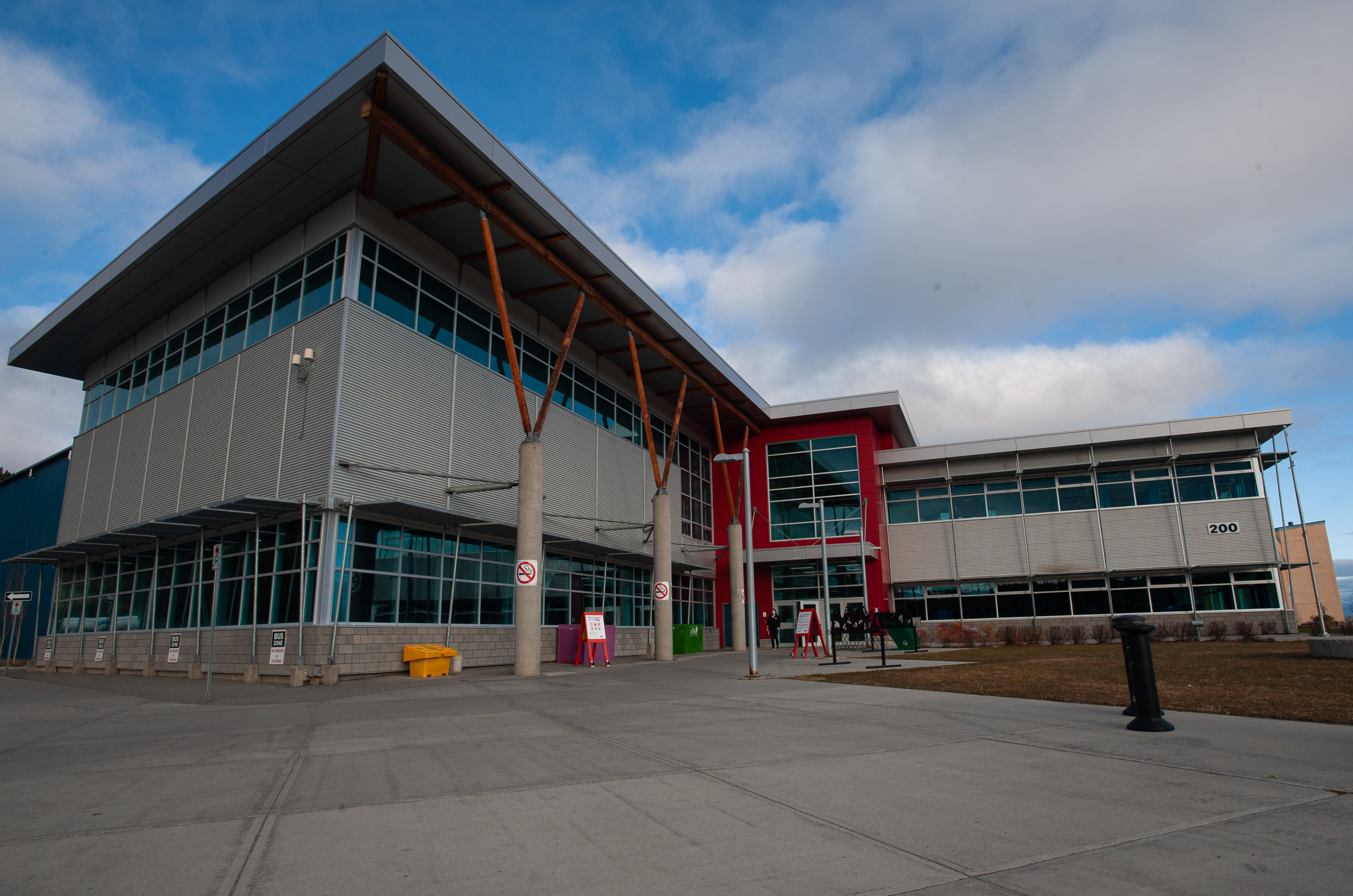
Alberta oil and gas companies could avoid cleanup costs by installing solar panels: government report
An Alberta government-commissioned report suggests oil and gas site companies may be able to install...
Corporate emissions from the City of Whitehorse have increased by 40 per cent since 2015, falling far short of a goal to reduce them by 10 per cent from 2014 levels this year, according to a new emissions report.
“This result highlights that the current staffing levels, prioritization, and project funding approach have not been sufficient to make progress on [greenhouse gas] emissions reductions,” says the report, which quantifies the city’s corporate emissions between 2015 and 2019. (The city defines corporate emissions as “those that the local government creates through its activities (and which it has control over) such as local government building operations, recreation centres, vehicle fleets, and utility services.”)
“To get the city back on track as a leader in sustainability and climate action, a renewed focus is required.”
While the city’s fleet of light vehicles and heavy equipment has historically been the largest producer of greenhouse gas emissions, that changed in 2019, when the city reached “a new high,” producing 7,023 tonnes of carbon dioxide — mostly attributable to a large, multi-purpose recreational facility, the report says.
Opened in 2005, the Canada Games Centre now relies heavily on fossil fuels for heating purposes instead of electricity, making it responsible for the bulk of the city’s emissions. Yukon Energy, the territory’s utility, doesn’t have enough capacity to provide electricity to the centre, according to the report. As a result, the city’s emissions from oil, gas and diesel fuel climbed “significantly” between 2016 and 2018.
“In the past, the city benefited from Yukon Energy’s secondary sales program which allowed the [Canada Games Centre] to access discounted electricity rates to run an electric boiler when Yukon Energy had excess hydroelectric capacity,” the report says.
This program, which provides businesses with hydroelectricity instead of fossil fuels to heat their facilities, wasn’t offered in 2019 because there was lower than normal snowpack and inflows at all three of Yukon Energy’s hydro plants, a company spokesperson said in an email to The Narwhal.
Generally speaking, energy demand in the territory has increased, which has effectively eaten into the city’s renewable energy supply, Cody Reaume, an environmental coordinator with the city, told The Narwhal.
The reasons behind that growth are linked to more electrical heat being used and more mining activity, he said. An increase in population is another factor, Reaume added. Between 2015 and 2019, the number of Whitehorse residents increased from 29,325 to 32,302, according to the report.
Using more fossil fuels can be blamed, in large part, on the centre, which burned oil for more than 4.3 million kilowatt hours between 2015 and 2019, the report states. During the same period, the entire city’s oil usage increased by roughly the same amount to keep up with growing energy demand.
The report shows that in 2015, the centre produced 482 tonnes of carbon. Four years later that figure had increased exponentially, totalling 1,856 tonnes in 2019.

The Canada Games Centre is largely responsible for a dramatic increase in the city of Whitehorse’s corporate emissions. Photo: Julien Gignac / The Narwhal
Emissions from the city’s fleet of vehicles and heavy equipment, the second largest emitter, remained relatively consistent between 2015 and 2019, hovering around 1,200 tonnes of emissions, the dataset shows.
The details also reveal the city spent most of its money on electricity in 2019. Of the $5 million spent on energy that year, 62 per cent was earmarked for electricity, with heating oil, gasoline and diesel accounting for 36 per cent. Two per cent of the budget was spent on propane.
The bottom line is that the city’s carbon footprint is growing, said Steve Roddick, a city councillor who requested that the emissions report be made public.
“Even if we can increase the efficiency of the buildings and retrofit older buildings, if the footprint is growing, we’re not really going to shrink our emissions,” he said. “It’s not so much about increasing efficiency — that’s part of it — but you also have to fuel switch in tandem with that and make commitments that allow you to do that.”
The city is at the whims of weather patterns: if a cold winter strikes, that will drive up energy use — and emissions. That makes the status quo unsustainable if the city wants to reduce its output of emissions, Roddick added.
To brace for electricity demand this winter, Yukon Energy is already planning to rent 17 diesel generators, up from nine last year.
Last month, the Yukon government released its anticipated climate change strategy, which aspires to reduce greenhouse gas emissions in the territory by 30 per cent below 2010 levels by 2030.
Ninety per cent of the territory’s electricity is already derived from renewable energy sources
— primarily through hydroelectricity. The territory wants to get that figure up to 97 per cent.
But the strategy notes that only roughly 24 per cent of all energy in Yukon right now comes from renewables when heating is factored in, as well as diesel-fuelled electricity in off-grid communities.
The City of Whitehorse itself has also pledged to do more to limit emissions after declaring a climate emergency this time last year. The emergency resulted in the creation of an energy management position, which spurred the creation of the city’s recent emissions report.
But the data shows the city is a long way away from reaching its internal goal of reducing corporate emissions by 25 per cent below 2014 levels in the next decade.
Roddick said this goal isn’t realistic.
“We need [emissions] to be going down and they’re going up,” he said. “We are not doing what we need to do to meet that target. We are really focused on the short-term costs and not thinking about the long-term costs of failing to act.”
But the silver lining is that the city now has data to show where more work is needed, Reaume said — a key ingredient to making the necessary changes to meet targets.
“In the past, I think there’s been some uncertainty over exactly what tasks or what projects need to be implemented and I think having this data really makes that clear for us, so that we can understand exactly what we need to do.”
The Yukon government’s plan to add more renewable energy to the grid will help lower greenhouse gas emissions across the territory, including Whitehorse, Reaume said.
“It creates options for organizations and citizens to go green.”
Editor’s note Thursday, October 15, 2020 at 10:24 a.m. PST: This article was updated to correct an error. The Canada Games Centre was opened in 2005 and not built in 2011 as previously stated.
Content for Apple News or Article only Get the inside scoop on The Narwhal’s environment and climate reporting by signing up for our free newsletter. This...
Continue reading
An Alberta government-commissioned report suggests oil and gas site companies may be able to install...

This story about a lawsuit involving First Nations in northern Ontario has deep roots — in...

At a crucial point in their research, biologists are scrambling to find new support for...

